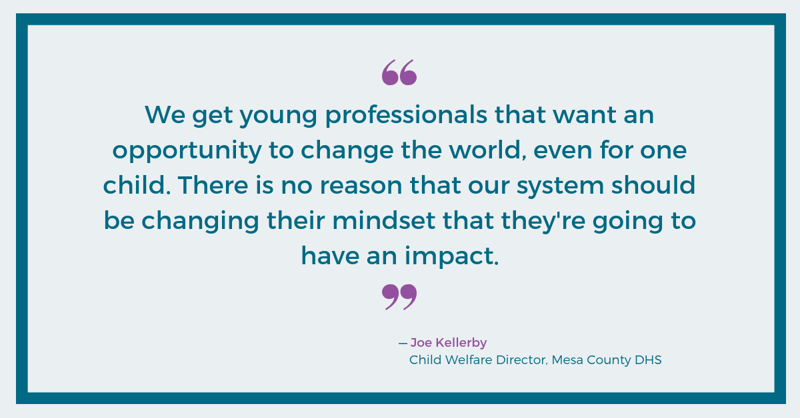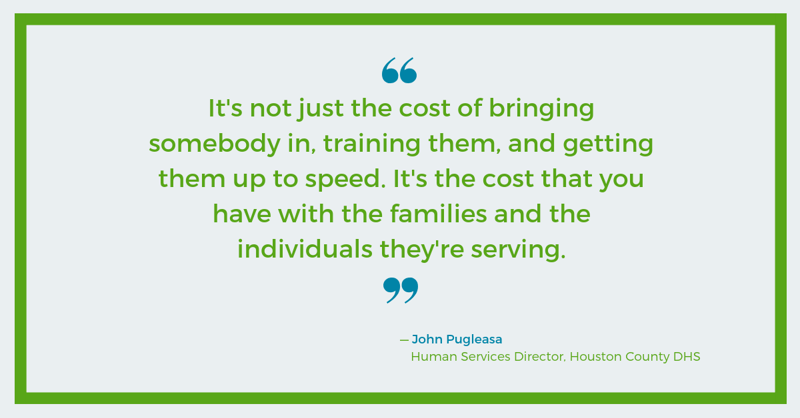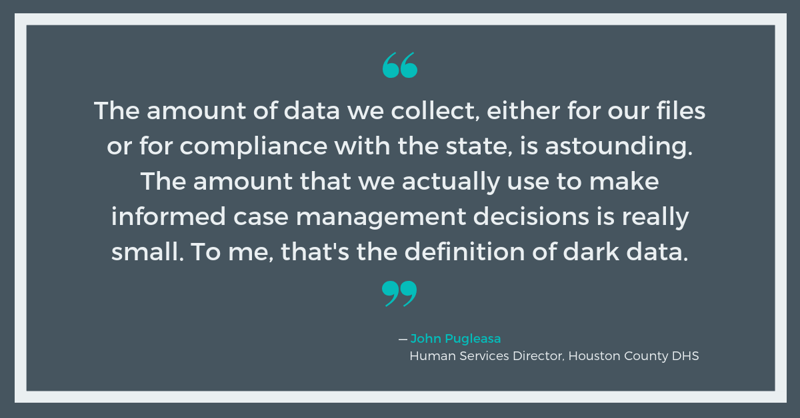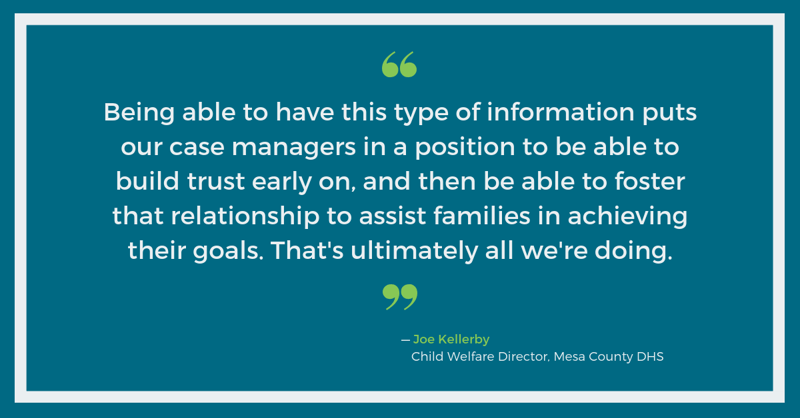In child welfare agencies across the country, social workers and front-line supervisors encounter significant obstacles when finding the best placement for a child in an emergency, are expected to evaluate every psychotropic medication use in youth in foster care, and face the seemingly impossible task of staying on top of cases that open and re-open over several years.
For some, innovative technology solutions have helped them to overcome these systemic barriers. Implementing a system of engagement designed to increase efficiency and improve service delivery, for example, has helped these agencies to take full advantage of their case content—collecting, analyzing, and displaying the critical data and information needed to make confident decisions about child safety.
.jpg?width=300&height=225&name=IMG_3619%20(1).jpg) I spoke with the following panel of industry experts at APHSA’s IT Solutions Management (ISM) conference in September about technology’s impact on some of the most challenging aspects of child welfare social work:
I spoke with the following panel of industry experts at APHSA’s IT Solutions Management (ISM) conference in September about technology’s impact on some of the most challenging aspects of child welfare social work:
- Joe Kellerby, Child Welfare Director, Mesa County Department of Human Services
- John Pugleasa, Human Services Director, Houston County Department of Human Services
- Russ Branaghan, President, Research Collective
Keep reading for a summary of some key points we discussed on how technology designed to solve social workers’ most pressing problems can lead to more meaningful outcomes for agencies and families.

Invest in your workers to improve retention and job satisfaction.
Like most directors, both Joe and John want to retain talented, dedicated social workers. That starts with investing in tools that give them more time to do the job they were hired to do.
When Mesa County DHS first began exploring technology options, the decision started with frustrated staff. Joe said he commonly heard during exit interviews that case managers were turning over because their existing digital filing system was so outdated that it was keeping them from being able to do the high-value work they wanted to with families.

“We get young professionals that want an opportunity to change the world, even for one child. There is no reason that our system should be changing their mindset that they're going to have an impact,” he said.
John said Houston County DHS had similar issues. “The sad thing is, we'd have these people who care deeply about the people they serve. But we were sending them out broken-hearted and jaded because we were asking them to do something that was virtually impossible.”
John started asking what would make workers’ jobs more manageable. Most said they were spending nearly 75% of their time doing administrative kinds of things instead of doing face-to-face social work.
He knew a system of engagement could help turn things around. “We wanted to take that pie of time and make the slice of it that's for administrative and compliance types of things smaller, not reducing the things that are required of us, but doing it more efficiently.”

Lessen the cost of turnover and the impact of “information gaps” on children and families.
As John noted, the cost of turnover climbs even higher when you consider its impact outside of agency walls. “It's not just the cost of bringing somebody in, training them, and getting them up to speed. It's the cost that you have with the families and the individuals they're serving.”

“We're dealing with folks who are going through crisis and trauma. They are experiencing some of life's hardest things, and trust isn't something that's given freely. If the people they're required to interact with are changing over all the time, it makes the work that much more difficult and less effective.”
A large part of the problem is that turnover causes information gaps between workers.
It’s not uncommon that when workers are assigned a “new” case, they’re often the eighth or ninth in a long line of workers who have owned or touched the case over time. As these cases open, close, and get transferred, the information and content that’s collected gets saved in different formats and places, and it’s difficult to pull all the pieces together to understand the whole story.
Yet, workers are supposed to know all this information the first time they engage a family and be able to use it to support potentially life-altering decisions, like whether to go to court or remove a child from home.
A system of engagement closes the gap of information that’s lost when workers turn over.
Joe called it “the bullseye” Mesa County DHS was looking for when evaluating tools: “We can equip them with information that’s needed, not just new information that has come to the department, but information from years and years ago.”

Empower workers to make well-informed decisions that keep children safe and families self-sustainable.
Information gaps aren’t just a result of turnover. The reality is, child welfare social workers are collecting so much information over time that it becomes “dark” or hidden and difficult to use.

John summarized the problem well: “The amount of data that we collect, either we collect for our files or that we collect for compliance with the state, is astounding. The amount of that we actually use to make informed case management decisions is really small. To me, that's the definition of dark data.”
Russ compared the problem in child welfare to a surgeon using a lousy scalpel. “It's not that you're lacking data, it's that you can't find the data that you need, or you can't find the relationships, or you don't know if it's the most timely, and so on, so there's a lot of lost opportunity. You are knowledge workers. Your main tool is information. If you don't have the tool you need, you can't get your work done as well. Information is key, and making sure it's really high signal, low noise is important.”
Being able to find information and use it when talking with families—especially in a time of crisis or uncomfortability for them—can show them that you care, which puts them at ease.
It underscores the fact that you’re not just there to point fingers, but to identify and build on the family’s strengths, and also try to mitigate risks or potential safety issues. Simply put, it lays the foundation for establishing trust and making meaningful connections that can change a person’s life.

As Joe said, “Being able to have this type of information puts our case managers in a position to be able to build trust early on, and then be able to foster that relationship to assist families in achieving their goals. That's ultimately all we're doing.”
“We're not dictating anything for families if we recognize that they're the expert on their own family. We're just going to go in and try to support them on a path of success. We feel quick, appropriate, and comprehensive data can help us do that.”

View our case studies to learn more about how Houston County DHS and Mesa County DHS use Traverse, our system of engagement for child welfare, to improve outcomes and do high-value work with families.
Rich Bowlen’s goal is and always has been to give his very best day in and day out to do the most good for the most kids. Rich is dedicated to improving the lives of caseworkers and social workers so they can focus on what they do best: supporting the children, adults, and families that rely on the agency’s care.

